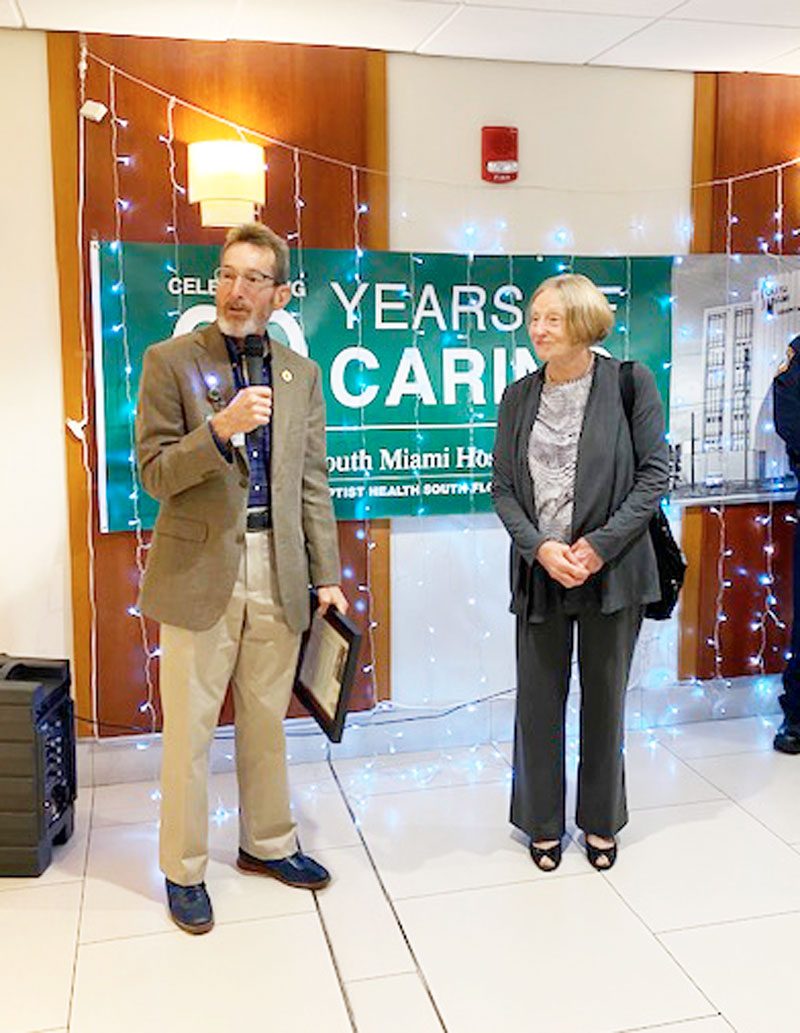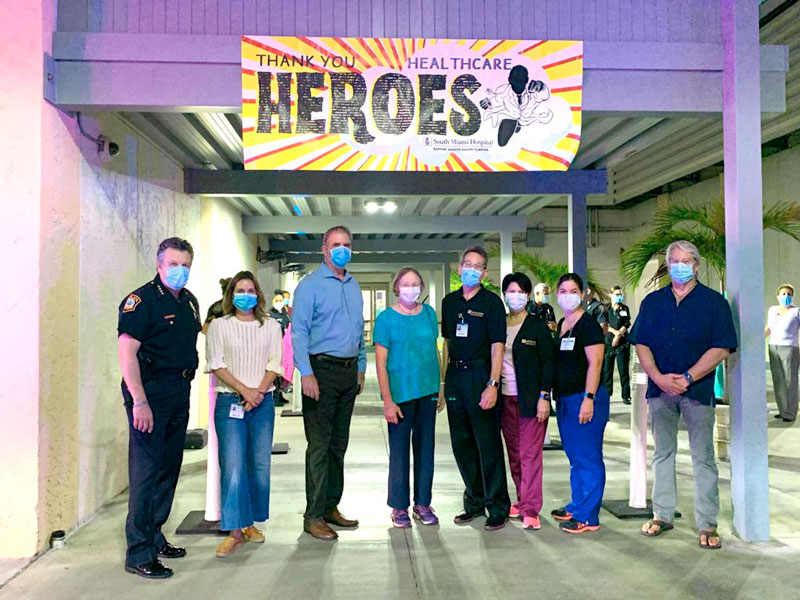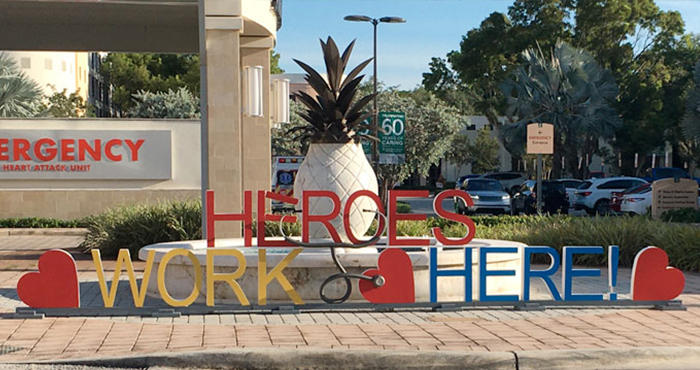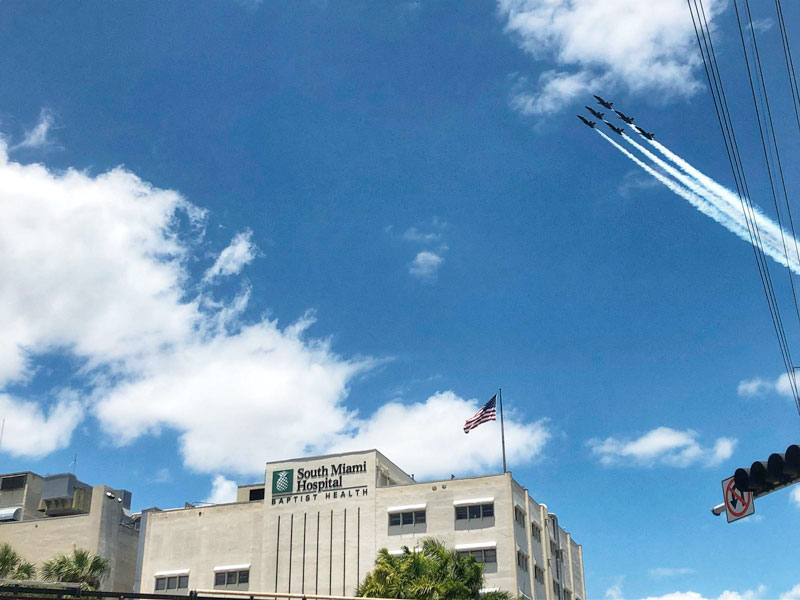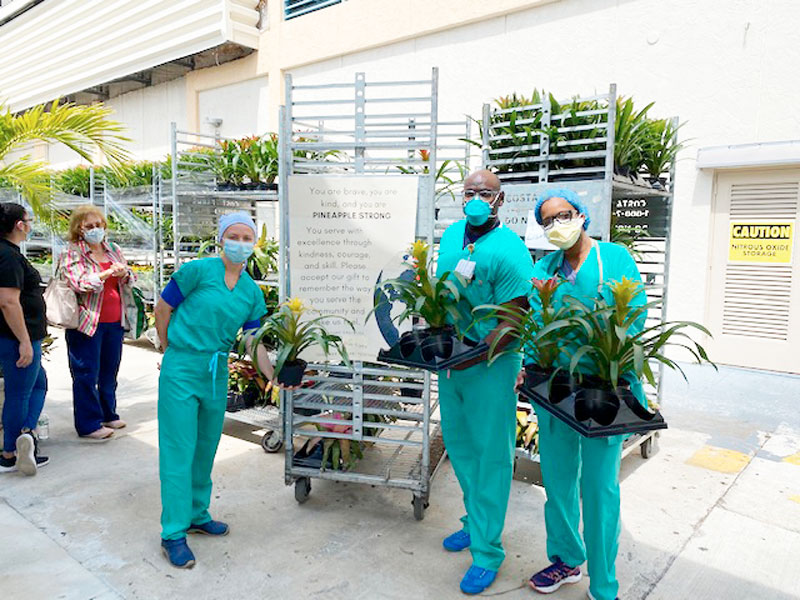It was an ambitious plan, conceived by a group of local doctors who met weekly in 1959. With limited resources and not so much as a building to call their own, they decided South Miami needed a hometown hospital.
That’s what brings us to the present day.
Their unwavering vision for South Miami Hospital, which is celebrating its 60th anniversary, built what is now a pillar of the community, dedicated to a tradition of excellence in serving the area’s healthcare needs.
The hospital had humble beginnings: the original structure on SW 62nd Avenue and South Dixie Highway was nothing more than a leased office building designed to accommodate 100 beds. Today, the hospital’s capacity has more than quadrupled. In its infancy, South Miami Hospital had 200 employees; today, there are more than 2,200.
Every step of the way, as the hospital grew and evolved into the landmark it is today, the founders and those who came after them stayed true to the mission of improving access to quality care. South Miami Hospital is consistently ranked among the top hospitals in the region by U.S. News & World Report. It has achieved the highly coveted Magnet designation for excellence from American Nurses Credentialing Center, among many other honors.
Part of Baptist Health South Florida, the hospital has become home to many cutting-edge medical programs, such as Miami Neuroscience Institute’s Center for Spine Care, the Center for Robotic Surgery, and the only preterm labor and prematurity program in Florida to be certified by the Joint Commission. Yet, for all its sophistication, South Miami Hospital still retains its hometown feel. In an increasingly complex world, it has never forgotten its roots.
“The success of the past 60 years holds us to a high standard today,” says Bill Duquette, South Miami Hospital’s CEO. “Our founders envisioned a hospital that would serve our community with the utmost integrity and honor. As we move forward into the next decade and beyond, we continue to place our patients first, just as our founders did.”
Particularly during the COVID-19 pandemic, the impact of South Miami Hospital can be seen as community groups and individuals went out of their way to express appreciation for the life-saving care taking place inside. The City of South Miami, including the mayor, commissioners, police, and residents, joined together for a Caravan of Gratitude in vehicles around the hospital. As hospital employees worked tirelessly, people sent messages of encouragement and erected signs and placards to greet them each day. Costa Farms, a longtime supporter of Baptist Health’s nurses, provided bromeliads for employees to take home. Girl Scout Troup 1919 donated the proceeds from their annual cookie sales to deliver hot meals to the hospital’s night shift workers.
“Everyone at South Miami Hospital feels deeply connected to this community, and it is wonderful to know that the community feels the same way about us,” Mr. Duquette says.
South Miami Hospital has always been at the forefront of pioneering care to meet the needs of residents. For example, in 1975, it was the first hospital in Miami-Dade County to install a CT scanner, a staple in today’s medical arsenal that was then considered experimental. It also revamped its obstetrics care in the mid-70s into the Center for Women and Infants, which was groundbreaking at the time and continues to be a leader in the nation, participating in research and clinical trials to advance care and save lives. The Child Development Center opened in 1993 to provide diagnostic and early intervention services to families of children with developmental delays. It continues to make a difference every day for hundreds of families.
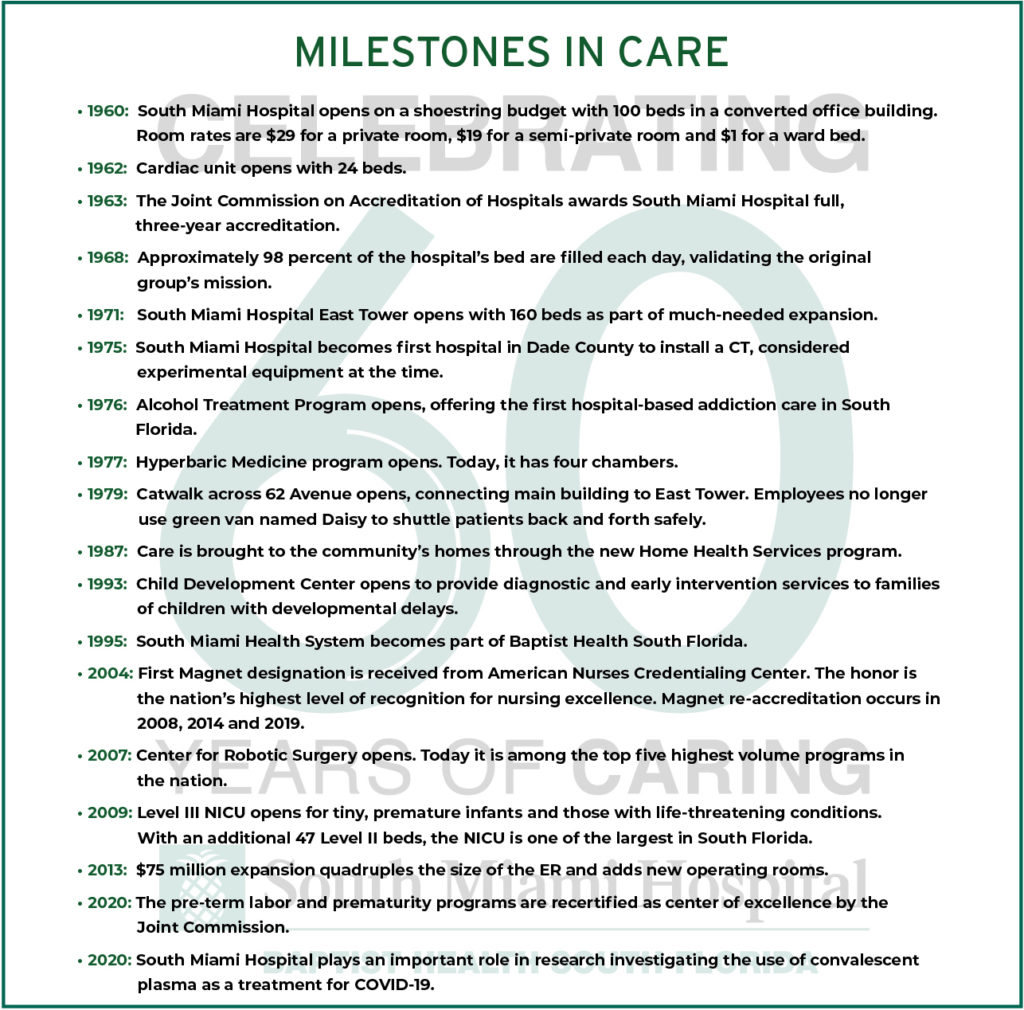
“We’re here for our community. That consistent patient and family focus is critical,” says Carmen de Lerma, M.D., director of the Child Development Center. “We have a role in their families, and we are going to continue being a part of their families for a long time.”
Functioning through the pandemic may have proven a challenge for the Child Development Center, but far from an impossible one. When the center was required to shut down in early spring, the staff adjusted by providing virtual therapy through telehealth, using computers and tablets to connect with families. Our team also helped parents over the phone, providing much-needed support.
“The needs of the children did not go away just because they were at home. Whatever their therapy goals — language, feeding, gross motor skills, or fine motor skills — these still needed to be met,” Dr. de Lerma says. When the center was allowed to reopen, operations pivoted for social distancing and safety. Grateful families were thrilled to return. “You could see it. There was such joy in the children to come back and resume their routine from before the pandemic,” Dr. de Lerma says.

Bill Duquette, CEO leads fifteen staff and volunteers in planting South Miami Hospital’s first Community Garden.
The Child Development Center is an excellent example of South Miami Hospital’s commitment to putting the community’s needs; first, Dr. de Lerma says, the generosity of our donors helps the Child Development Center continue to provide outstanding healthcare to our youngest patients and ensures the sustainability of the program.
The hospital also provides services to underserved and needy families at the South Miami Children’s Clinic located near the Gibson-Bethel Community Center, a mobile family clinic in partnership with Florida International University, and a partnership with City of South Miami police department to provide shelter for the homeless.
Efforts to build a stronger, healthier, and more resilient community for everyone are vital to the hospital’s philosophy, says Mia Corradino, manager of the hospital’s community relations. You can see it in the hospital’s support of a meditation garden as part of the Underline project under the Metrorail tracks or the recent opening of the fourth Baptist Health Grow2Heal garden that will provide fresh vegetables and herbs and serve as a center for workshops on how to grow and use fresh produce. “We want to emphasize better nutrition, exercise, and the importance of preventive care in all segments of the community,” Ms. Corradino says. “We are very much in tune with what the community needs. Whatever event the city has, we try to be a part of it, and whatever event we have, they are a part of it.”
That sense of partnership will be further expanded with a Healthy South Miami initiative the hospital is spearheading to involve more local businesses and community groups. “We’re engaging our community partners in the South Miami area to unite everyone to live more healthily as a community,” Ms. Corradino says.
When a hospital visit is required, residents know they can rely on South Miami Hospital, which is always looking ahead and striving to provide the highest level of care. For example, the hospital is undergoing an update and expansion of its Critical Care Services with the opening of a new state-of-the-art Surgical Critical Care Unit, incorporating the most advanced technology available. The hospital’s neonatal intensive care unit has digital cameras on every bed to provide parent’s peace of mind and constant visual access to their babies. The labor and delivery department has dedicated beds for preterm labor and high-risk pregnancies. The preterm labor program is one of only three in the nation to achieve certification from the Joint Commission; the prematurity program for infants is one in only five in the country to be certified.
Cardiac care at South Miami Hospital is also highly advanced and is one of the areas recognized by U.S. News & World Report. Highly trained physicians work together to develop successful and proactive treatment strategies for complicated cases. “We are offering academic-quality interventions in a community hospital setting,” says interventional cardiologist Phillip Erwin, M.D., the director of Complex Coronary and Structural Interventions at South Miami Hospital. “We’ve had excellent outcomes. Patients should view South Miami Hospital as a place they would choose because they are comfortable — their neighbors and friends surround them. Their families are nearby, and they have a doctor that they have come to have a relationship with.”
That was certainly the case for patient David Horovitz. He had life-saving interventions with Dr. Erwin at South Miami Hospital when it was discovered his chest pain was due to an almost total blockage of his aortic valve. “Words cannot describe how they took care of me,” Mr. Horovitz says. “It was amazing. Everybody in the hospital was so nice, from the nurses to the med techs that came to take my temperature. They were wonderful.”
Prisciliana Berrios de la Vega had a similar experience when she had surgery at the Spine Center for a herniated disc in her neck that threatened her permanently. She was impressed with the new, up-to-date facilities. But most of all, she was impressed with the staff’s compassion and personal approach.
“I wasn’t treated like a number. They cared,” Ms. Berrios said. “From the reception, people that took care of me in the front, to the nurse practitioners, to the insurance people. Even the guy in the parking lot. It was amazing every step of the way.”
Kiki Bochi

